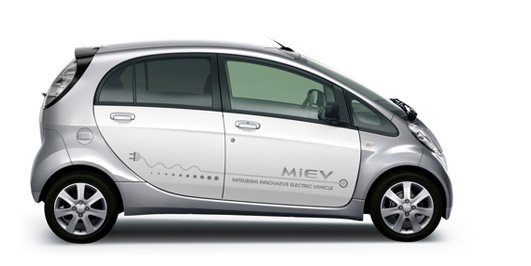Entry level i-MiEV to cost less – at a price
“Price is what you pay. Value is what you get.” – Warren Buffett
Many automobile consumers do not think in these terms when they buy a vehicle. “What’s your bottom line?” is a common refrain. With a focus on lowest price, sometimes they miss out on the best value. Mitsubishi’s new electric vehicle (EV) is a prime example. Or is it?
First, it should be noted that Mitsubishi was one of the first, if not the first, major automaker in Japan to offer EVs to individual consumers, making them available in April of 2010. This after the vehicle had been available to government agencies and corporations since July 2009. This puts Mitsubishi ahead of most in the real-world data collection and analysis business. Which could be a factor in the introduction of their new entry level EV.
The new entry level M will be significantly less expensive than the top-level G. After government incentives, the M costs ¥1,880,000 ($23,199). The G runs ¥2,840,000 ($35,045) after incentives. But this reduction in price is accompanied by other reductions – less power, fewer features, and yes… less range. Horsepower drops from 63 in the G (47 kilowatts), to 40 horsepower in the M (30kilowatts). (LEAF has an 80 kilowatt (107 horsepower) motor). The top-level G offers a 16.0 kilowatt hour battery, the M – 10.5 kilowatt hours. (LEAF – 24 kilowatt hours). Top speed of Gen one i-MiEV was limited to 80 miles per hour (although we have our doubts that it could exceed that number). Certainly the M will be much less.
Using the Japanese JC08 test cycle, the M will go 120 kilometers (74 miles), the G will go 180 kilometers (111 miles) and the LEAF will go 200 kilometers (124 miles).
Mitsubishi is referring to the new models as the second generation i-MiEV. This second generation offers improved performance, upgraded safety features (such as standard stability control) and more standard equipment in the G such as navigation and heated front seats.
Another interesting feature – an optional AC power supply adapter to be able to power alternating current appliances up to 100 watts. Mitsubishi is looking to have a 1500 watt converter available by year end so that one’s electric car can provide emergency power when needed.
With this announcement, Mitsubishi addresses their customers requests for longer range (up 20% in the G from version one) and a lower price. But you must decide which one you want because, as with so many things in this life, you can’t have both.

